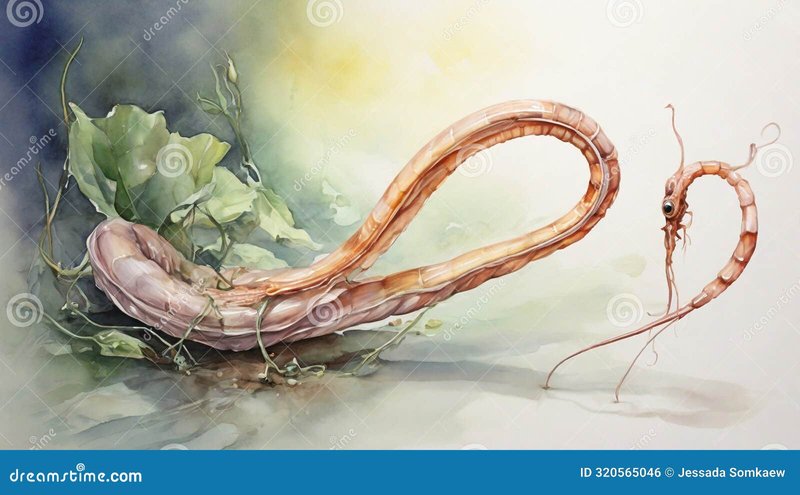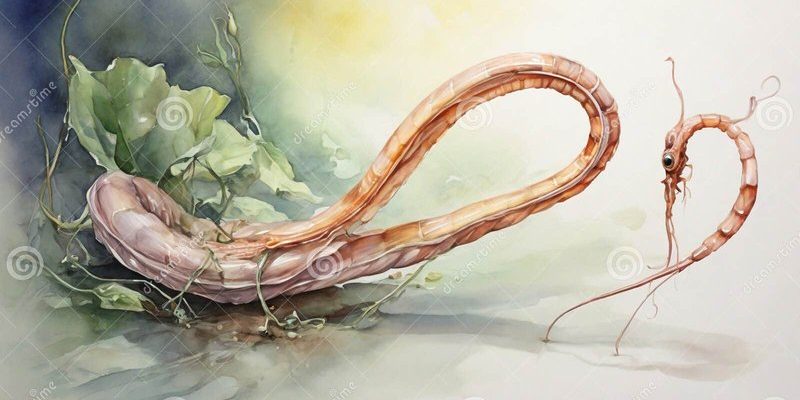
Understanding how ribbon worms use their proboscis to capture prey is like peeling back the layers of an onion. Each layer reveals something new and intriguing about their hunting techniques and their role in the ecosystem. So, let’s dive into the world of ribbon worms and explore the mechanics behind this fascinating feeding strategy.
What Are Ribbon Worms?
Before we dig into the details of their hunting methods, let’s get to know these creatures a bit better. Ribbon worms, or *Nemertea*, are a phylum of soft-bodied worms that often exist in marine environments. They can vary in size, with some species measuring only a few centimeters long, while others can stretch over 30 meters! Yes, you read that right—30 meters.
They have a flattened body that usually resembles a ribbon, which is how they earned their name. Ribbon worms are often colorful, showcasing bright hues that help them blend into their surroundings or ward off potential threats. They live in various habitats, from sandy ocean floors to rocky crevices, showcasing an impressive adaptability that speaks to their evolutionary success.
The Proboscis: An Overview
Now, let’s focus on the star of the show: the proboscis. Think of the proboscis as a highly specialized tool that ribbon worms use to snag their dinner. It’s a long, muscular extension that can be rapidly ejected from their bodies. In some ways, it functions like a slingshot or a stretchy rubber band—capable of launching forward with speed and accuracy.
When the proboscis shoots out, it can either capture prey directly or release a sticky substance that ensnares them. This clever mechanism allows ribbon worms to hunt effectively, even when they can’t rely on speed or agility. With a proboscis that can stretch several times their body length, they can ambush a variety of small marine animals, such as crustaceans or fish.
How Do Ribbon Worms Use Their Proboscis?
So, how exactly do ribbon worms utilize this extraordinary appendage? The process starts with their keen sense of their surroundings. Ribbon worms can detect movement and vibrations in the water, which helps them locate potential prey nearby. When they spot something tasty—like a small fish or crab—they prepare to strike.
Here’s where the magic happens: the proboscis is ejected with incredible force, either directly capturing the prey with its muscular grip or by wrapping around it. The sticky secretions from the proboscis help secure the meal, making it harder for the prey to escape. It’s a high-stakes game of patience and precision, much like a cat stealthily stalking a bird.
Once the prey is secured, ribbon worms can then pull the captured animal back toward their mouth for consumption. Believe it or not, these worms can even extend their proboscis to eat prey that’s larger than themselves. Nature sure has some impressive tricks up its sleeve!
The Importance of the Proboscis in the Ecosystem
You might be wondering why understanding the proboscis is important in the grand scheme of things. Ribbon worms play a vital role in their ecosystem by helping to control the population of various marine organisms. By preying on smaller animals, they help maintain a balance in the food web.
Additionally, they’re an essential food source for larger predators, including fish and birds. If ribbon worms weren’t around to fulfill their niche, other animals would struggle to find enough food, creating a ripple effect throughout the ecosystem. Their unique feeding strategy illustrates the interconnectedness of life beneath the waves.
What Challenges Do Ribbon Worms Face?
Like many creatures, ribbon worms face numerous challenges in the wild. Changes in ocean temperature and pollution can threaten their habitats, making it crucial for their survival to adapt quickly. Additionally, they have their own set of predators, including fish and larger invertebrates that may find them tasty.
One of the biggest challenges is habitat destruction. As coastal areas are developed, the natural environments ribbon worms rely on can be altered or destroyed. This loss of habitat puts pressure on their populations, potentially leading to declines in their numbers—and that’s not great news for the ecosystems that depend on them.
Ribbon worms and their incredible proboscis showcase the variety and complexity of life in our oceans. By understanding how they capture prey with this unique tool, we gain insight not only into their habits but also into the delicate balance of marine ecosystems. Every creature, no matter how small, plays a significant role in our world.
So the next time you come across something about ribbon worms, you’ll know they’re more than just simple creatures. They’re skilled hunters, vital to their environments, and a prime example of nature’s ingenuity. Let’s appreciate and protect these fascinating beings, because every part of our ecosystem matters.

